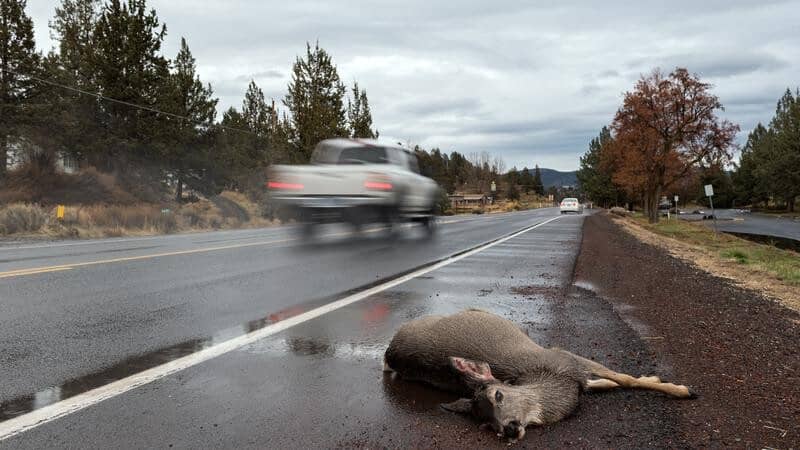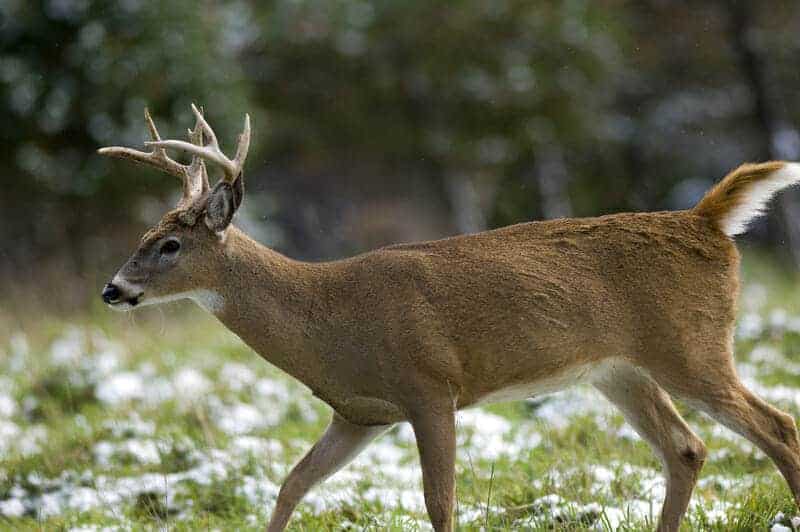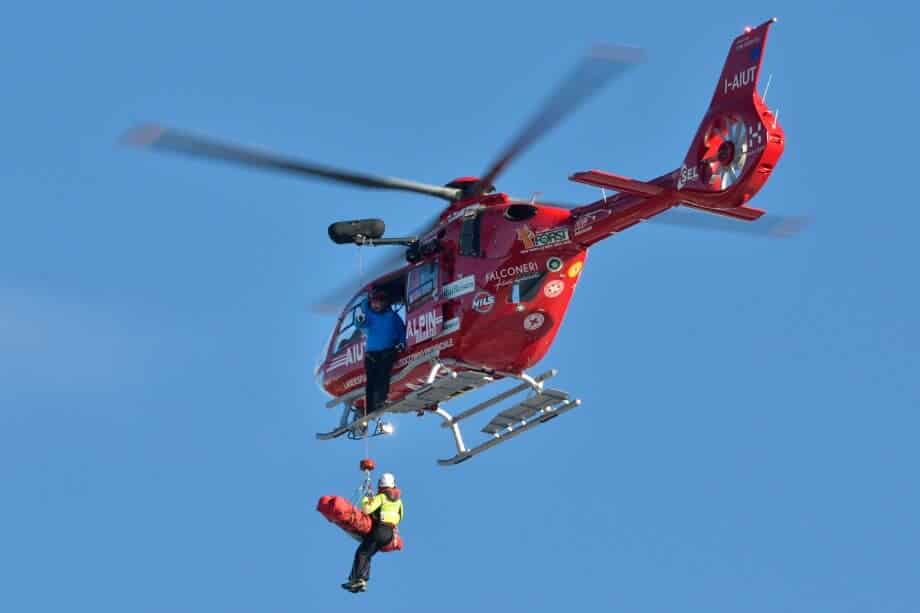Your initial reaction to the question “Are whitetail deer dangerous?” is probably no, especially if you have not thought about it; however, whitetail can be very dangerous and deadly in multiple settings. When a wild animal is chased, they will do anything to get away. Even more so if they are injured. We can also see the dangers of whitetail deer living in and around cities and towns. Many of them are hit by cars, causing injuries to passengers and expensive repair bills for their vehicles.
Whitetail deer, like any wild animal, are dangerous. Just last year, Thomas Alexander of Arkansas was gored and killed by a buck that he shot and mistook for dead [1]. As for the vehicular side, deer kill around 200 people and cost nearly one billion dollars in damages due to car crashes every year [2]. This is just one reason why hunting is so important for the management of the wild whitetail population.

Dangers While Hunting
When we are hunting it can be quite rare to come close enough to a live deer to be injured but it does happen on rare occasions. I know how exciting it can be after you just shot your biggest buck yet, but this is why it is always important to follow up your shot in the correct manner, and not just run up and grab the nice antlers you just downed. It does not matter if you kill the new Boone & Crockett world record if you never make it home.
The danger is compounded if you are far into the woods and help is not readily available. According to The Medical News Bulletin, “ the average time for an EMS unit to arrive on the scene from the time of a 911 call was seven minutes. This time increased to more than 14 minutes in rural settings. Nearly one in ten encounters wait up to a half-hour for EMS personnel to arrive”[3]. You can imagine that if it can take up to half an hour for help to arrive in an urban setting, that someone secluded in the woods may be waiting a while. With certain wounds, you cannot afford to wait that long.
After The Shot
So how do you safely recover your harvested buck? No matter what you are hunting with or how far you think the animal went, give the animal time to die. Even if you shot the deer and it fell where it stood, give your deer 30 minutes to an hour before even getting down from your stand. To be honest, I sometimes struggle with this rule. I get extremely excited and want to go after my buck as soon as I can but I know how important it is to withhold that urge.
As a young hunter, this is the one thing my father had (and sometimes still has to) remind me over and over again. Safety is always the number one priority. If you have trouble waiting, I recommend having some sort of routine/ritual after your shot to take up some time. For me and my father, it is eating chocolate poptarts for breakfast. We love morning hunts and hope to down a deer before breakfast anyway, so after I can calm down and stop shaking the whole tree, I eat my poptart. This allows me some time to make sure I see where the deer went and allow it to die. After our routine, about 30 minutes has passed and we are good to go after the deer.

The first step is climbing down from your stand safely. If you fall, you are in the same situation with EMS response times. Know what to do if you fall from your stand and have a plan beforehand. After you have safely climbed down from your stand, and you have tracked your deer it is very important that you approach the deer at the correct angle. A downed deer is not always a dead deer. Sometimes crazy things happen in the woods and a deer can seem totally dead but jump up and run at the drop of a hat.
You need to position yourself in such a way that if they do jump up, they do not run into you or in your direction. Always approach a deer from the rear on the side opposite of where its feet are laying. This way if the deer does get up and run, it will naturally run in the direction opposite of you.
If you have tracked it and the deer made a circle and is now facing you (even if it looks dead as a doornail) take a detour around it, keeping about 10-15 yards between you and it. Personally, I approach my deer as I said above, but I also poke it in the back with my barrel. It is important that you are ready to defend yourself if needed. Hopefully, your deer will always be dead but it is always better safe than sorry.
Animal plant made a good video about whitetail and broke down how their attacks go, check it out,
Dangers While Driving
The place whitetail deer are actually the most dangerous is your local roads and highways. According to the National Highway Traffic Safety Administration, there are about 1 million car accidents involving deer each year that kill 200 Americans, cause more than 10,000 personal injuries, and result in $1 billion in vehicle damage [4].
Deer related car accidents are a problem we have been dealing with for decades. These accidents are inevitable when we realize that we actually take up most of the habitat that they live in and that many states are considered overpopulated with whitetail. This is all the more reason for us to spread hunting culture and get more people involved in hunting and the outdoors!
Every year cars and trucks are manufactured to be safer and safer, so if you live in a place with a dense whitetail deer population and you are worried about hitting one, consider trading in your current vehicle for a newer model (or use this as an excuse…). You could also consider buying a brush/cattle guard for your truck and upgrading your headlights for better visibility at night.
Conclusion
Whitetail can be dangerous on two different fronts, so if you are in the woods, use your head to stay safe. Giving your animal time to die is key, and approaching from a safe angle will protect you from getting rushed by a wounded animal. We do not have as much control when it comes to hitting animals on the roadways but if you are worried about it, consider a safer vehicle or upgrading your current vehicle with equipment that will protect you.
Thanks for reading my article about if Whitetail are dangerous. I hope you enjoyed it and learned something you didn’t already know. If you like my content, subscribe to my weekly update. If you have any other questions about the dangers of whitetails or just want to connect, feel free to email me at [email protected].
Sources
- Allan, William F, and Wells, Joann K. “Characteristics of Vehicle-Animal Crashes in Which Vehicle Occupants Are Killed.” Traffic Injury Prevention 6 1 (2005) 56–59
- https://medicalnewsbulletin.com/response-time-emergency-medical-services/
- https://arc-solutions.org/article/deer-car-collisions-increase-this-time-of-year/


